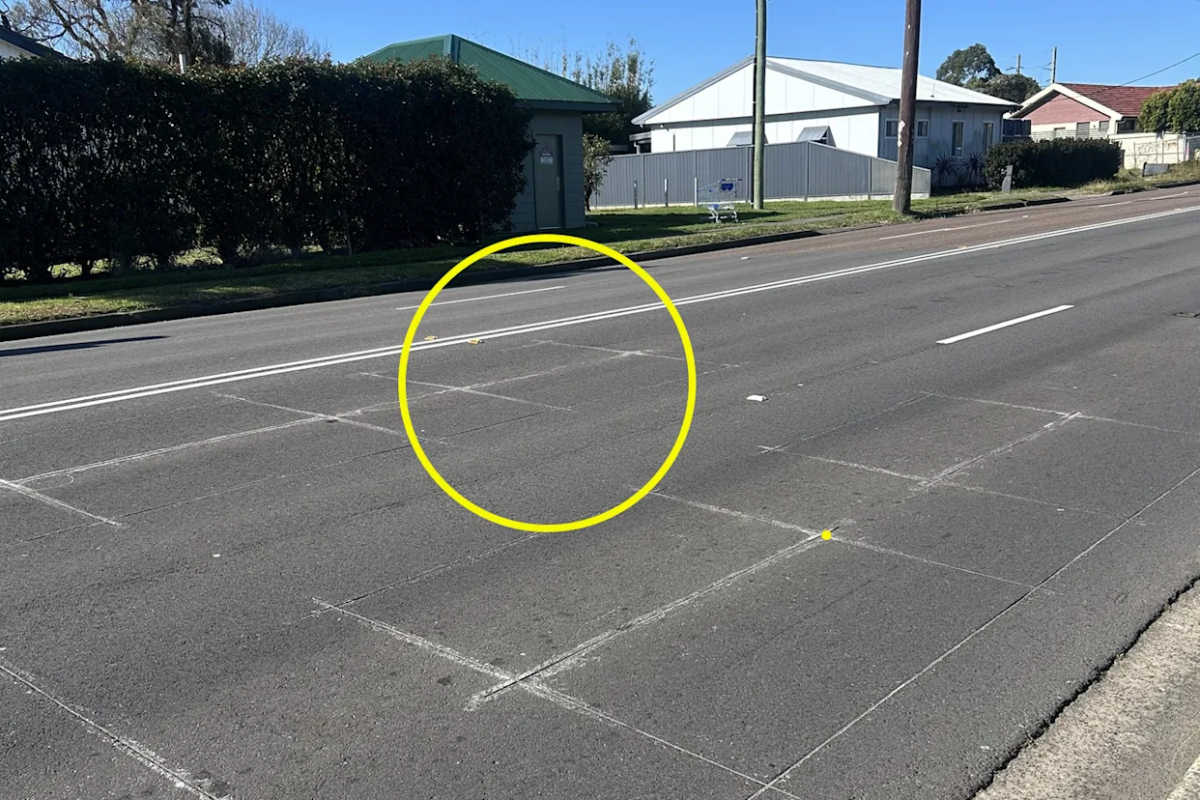
Next time you're sitting at traffic lights, take a moment to look down at the road surface just ahead of your bonnet. Those mysterious rectangular lines cut into the asphalt aren't just decorative—they're part of a brilliant Australian invention that's now helping manage traffic flow in over 180 cities across 28 countries worldwide.
You might be surprised to learn that beneath those unassuming lines lies technology that could be making your daily drives smoother, safer, and more efficient.
Yet according to Transport for NSW, many Australian drivers still don't understand how these sensors work, or more importantly, how their driving behaviour can help or hinder the system.
Australia's gift to the world's roads
Here's something to make you proud: SCATS was developed in Sydney, Australia by the New South Wales Department of Main Roads (a predecessor of Transport for NSW) in the 1970s. This Sydney Coordinated Adaptive Traffic System, or SCATS as it's known, represents one of Australia's most successful technology exports.
SCATS is installed at about 55,000 intersections in over 180 cities in 28 countries. In Australia, where the system was first developed, the majority of signalised intersections are SCATS operated (around 11,000). From Hong Kong to Dublin, from Tehran to Atlanta, Australian-designed technology is quietly keeping traffic moving around the globe.
'Studies have shown that installing traffic signals at a previous uncontrolled intersection can reduce crashes involving injury by 50 per cent'
The beauty of this system lies in what's happening beneath the road surface. Traffic signals in Victoria have detectors in each lane at the stop-line of every intersection. Detectors are wire loops located just under the road surface. You can see the outline of the rectangular loops at most intersections.
How these invisible guardians actually work
Think of these sensors as sophisticated metal detectors embedded in the road. Inductive loops work like a metal detector as they measure the change in the field when objects pass over them. Once a vehicle drives over a loop sensor the loop field changes which allows the detection device to detect the presence of an object (mainly a vehicle).
To install an inductive loop, workers lay the asphalt and then come back and cut a groove in the asphalt with a saw. The wire is placed in the groove and sealed with a rubbery compound. You can often see these big rectangular loops cut in the pavement because the compound is obvious.
The SCATS success story
It began to be used in Melbourne in 1982, Adelaide, South Australia in 1982 and Western Australia in 1983. Today, this Australian invention manages traffic flow across all major Australian cities and has become the backbone of intelligent traffic management worldwide.
The technology is elegantly simple yet remarkably effective. When a car stops on or drives over the loop, the larger steel (metallic) material making up the body of the car will act as the core of the induction loop.
Since steel is a magnetic material, it will increase the inductance of the loop and cause a change in the current flowing through the sensor circuitry.
Therefore, when the changes in the magnetic field are conveyed to the signal controller by the wire coils, they cause a change in traffic signal.
Why your positioning matters more than you think
Here's where many Australian drivers unknowingly sabotage the system. All the induction coil 'knows' is whether or not a car is currently parked on top of it. This is the main reason that the light may fail to change in a timely manner if a car doesn't pull all the way up to a stop.
Transport for NSW's recent social media reminder struck a chord with drivers who've experienced this frustration firsthand.
The agency explained that if drivers don't position themselves correctly over the sensors, 'this can result in traffic lights not changing as expected, causing unnecessary delays and frustration for those behind them.'
The motorcycle and bicycle challenge
However, it sometimes also means that bicycles, scooters, and motorcycles stopped at such intersections may be undetected (and therefore risk being ignored by the switch/signal). Most loops can be adjusted manually to consistently detect the presence of scooters and motorcycles.
Lighter vehicles like motorcycles may also fail to trigger the inductor with their weight alone, making them a hassle for bikers during low-traffic hours. The original article mentioned this issue, but there's actually a practical solution many riders don't know about.
If you're riding a motorcycle or bicycle and you're stuck at a red light that won't change, you should also try to find the inductive loop markings on the ground.
As they are designed to react to the presence of metal over the wire, Revzilla recommends placing your wheels directly above the lines in the pavement to expose them to as much of the metal parts of your bike as possible to trigger the sensor.
Better yet, if you're in a car stopped behind a motorcycle at a stop light and the motorcyclist waves you ahead, pull forward so your vehicle can trip the induction loop and help the light change faster. It's a small act of courtesy that can make a real difference.
Beyond the basics: How smart traffic systems adapt
Road sensors detect vehicles as they pass and either change signals to green or extend the green light time. At busy times, the green light period may extend to a set limit and the signals will follow a set sequence. Some signals respond to traffic arriving at the intersection.
Essential positioning tips for Australian drivers
- Pull forward until you're positioned over the rectangular sensor markings
- Don't stop too far back from the white line
- Look for the sealed rectangular lines in the road surface—that's where you need to be
- If you're on a motorcycle or bicycle, position your wheels directly over the sensor lines
- At quiet intersections, these sensors are especially crucial for triggering light changes
Information collected from the vehicle sensors allows SCATS to calculate and adapt the timing of traffic signals in the network. This isn't just about individual intersections operating in isolation—the system can coordinate multiple traffic lights to create those satisfying 'green waves' where you can travel through several intersections without stopping.
The technology evolution continues
While inductive loops remain the backbone of Australian traffic management, they have several significant disadvantages: Inability to distinguish between types of road users...
To address these shortcomings, new solutions for collecting traffic data have emerged, such as radar, video cameras and lidar sensors.
They are completing these reviews more efficiently than ever thanks to the installation of hundreds of new cameras and sensors by Smarter Roads, providing unprecedented visibility of what's happening on the arterial road network... Historically, traffic signal sites have been reviewed around every 10 years... With the help of hundreds more traffic monitoring cameras and sensors and extra people on the ground, we will be completing reviews at more than double the pace, every four to five years.
Your role in the system's success
Understanding these sensors isn't just about satisfying curiosity—it's about becoming a more effective part of Australia's traffic ecosystem. Next time you're cursing a stop light for taking too long, make sure that you're doing what you can to trip the induction loop.
Pull all the way forward, don't block the crosswalk, and wait for the light to do its job to keep your drive as safe and smooth as possible.
The next time you approach traffic lights, remember you're interacting with a piece of Australian innovation that's been quietly improving road safety and efficiency for nearly five decades.
Those rectangular lines beneath your wheels represent far more than simple road markings—they're part of a sophisticated network that's working 24/7 to keep you moving safely through your daily travels.
What started as a Sydney innovation in the 1970s continues to evolve, with newer technologies supplementing the reliable inductive loops that have served us so well.
As these systems become even more sophisticated, the basic principle remains unchanged: small actions by individual drivers can have a significant impact on traffic flow for everyone.
Have you ever found yourself stuck at a traffic light that seemed to take forever to change? Now that you know the secret, have you checked whether you were positioned correctly over those sensor lines? Share your traffic light experiences and any tips you've discovered for navigating Australia's smart intersection technology.
Original Article
https://au.news.yahoo.com/common-ro...c-lights-wish-more-people-knew-020858164.html
Sydney Coordinated Adaptive Traffic System—Wikipedia
Cited text: SCATS was developed in Sydney, Australia by the New South Wales Department of Main Roads (a predecessor of Transport for NSW) in the 1970s.
Excerpt: SCATS was developed in Sydney, Australia by the New South Wales Department of Main Roads (a predecessor of Transport for NSW) in the 1970s
https://en.wikipedia.org/wiki/Sydney_Coordinated_Adaptive_Traffic_System
Sydney Coordinated Adaptive Traffic System—Wikipedia
Cited text: SCATS is installed at about 55,000 intersections in over 180 cities in 28 countries. In Australia, where the system was first developed, the majority ...
Excerpt: SCATS is installed at about 55,000 intersections in over 180 cities in 28 countries.
https://en.wikipedia.org/wiki/Sydney_Coordinated_Adaptive_Traffic_System
How traffic lights work—Transport Victoria
Cited text: Traffic signals in Victoria have detectors in each lane at the stop-line of every intersection. Detectors are wire loops located just under the road s...
Excerpt: Traffic signals in Victoria have detectors in each lane at the stop-line of every intersection.
https://transport.vic.gov.au/road-a...gement/traffic-lights/how-traffic-lights-work
Inductive Loops | Diamond Traffic Products
Cited text: Inductive loops work like a metal detector as they measure the change in the field when objects pass over them. Once a vehicle drives over a loop sens...
Excerpt: Inductive loops work like a metal detector as they measure the change in the field when objects pass over them.
https://diamondtraffic.com/technicaldescription/124
How Traffic Lights Detect Cars Are Waiting for the Light to Change
Cited text: ... To install an inductive loop, workers lay the asphalt and then come back and cut a groove in the asphalt with a saw. The wire is placed in the gro...
Excerpt: To install an inductive loop, workers lay the asphalt and then come back and cut a groove in the asphalt with a saw.
https://auto.howstuffworks.com/car-...up-and-is-waiting-for-the-light-to-change.htm
Sydney Coordinated Adaptive Traffic System—Wikipedia
Cited text: It began to be used in Melbourne in 1982, Adelaide, South Australia in 1982 and Western Australia in 1983.
Excerpt: It began to be used in Melbourne in 1982, Adelaide, South Australia in 1982 and Western Australia in 1983
https://en.wikipedia.org/wiki/Sydney_Coordinated_Adaptive_Traffic_System
How Do Traffic Light Sensors Work? - Auto Mate Systems Ltd.
Cited text: But when a car stops on or drives over the loop, the larger steel (metallic) material making up the body of the car will act as the core of the induct...
Excerpt: When a car stops on or drives over the loop, the larger steel (metallic) material making up the body of the car will act as the core of the induction loop.
https://www.automatesystems.co.uk/how-traffic-light-sensors-work/
How Traffic Lights Detect Cars Are Waiting for the Light to Change
Cited text: All the induction coil 'knows' is whether or not a car is currently parked on top of it. This is the main reason that the light may fail to change in ...
Excerpt: All the induction coil 'knows' is whether or not a car is currently parked on top of it.
https://auto.howstuffworks.com/car-...up-and-is-waiting-for-the-light-to-change.htm
Induction loop—Wikipedia
Cited text: However, it sometimes also means that bicycles, scooters, and motorcycles stopped at such intersections may be undetected (and therefore risk being ig...
Excerpt: However, it sometimes also means that bicycles, scooters, and motorcycles stopped at such intersections may be undetected (and therefore risk being ignored by the switch/signal).
https://en.wikipedia.org/wiki/Induction_loop
How Traffic Lights Detect Cars Are Waiting for the Light to Change
Cited text: Lighter vehicles like motorcycles may also fail to trigger the inductor with their weight alone, making them a hassle for bikers during low-traffic ho...
Excerpt: Lighter vehicles like motorcycles may also fail to trigger the inductor with their weight alone, making them a hassle for bikers during low-traffic hours
https://auto.howstuffworks.com/car-...up-and-is-waiting-for-the-light-to-change.htm
You have to pull all the way forward at traffic lights. Here's why
Cited text: If you’re riding a motorcycle or bicycle and you’re stuck at a red light that won’t change, you should also try to find the inductive loop markings on...
Excerpt: If you're riding a motorcycle or bicycle and you're stuck at a red light that won't change, you should also try to find the inductive loop markings on the ground.
https://qz.com/traffic-lights-sensors-pull-forward-intersection-1851546043
You have to pull all the way forward at traffic lights. Here's why
Cited text: If you’re in a car stopped behind a motorcycle at a stop light and the motorcyclist waves you ahead, pull forward so your vehicle can trip the inducti...
Excerpt: if you're in a car stopped behind a motorcycle at a stop light and the motorcyclist waves you ahead, pull forward so your vehicle can trip the induction loop and help the light change faster
https://qz.com/traffic-lights-sensors-pull-forward-intersection-1851546043
Traffic signals | Sunshine Coast Council
Cited text: Road sensors detect vehicles as they pass and either change signals to green or extend the green light time. At busy times, the green light period may...
Excerpt: Road sensors detect vehicles as they pass and either change signals to green or extend the green light time.
https://www.sunshinecoast.qld.gov.a...ads-and-transport/road-safety/traffic-signals
Sydney Coordinated Adaptive Traffic System—Wikipedia
Cited text: Information collected from the vehicle sensors allows SCATS to calculate and adapt the timing of traffic signals in the network.
Excerpt: Information collected from the vehicle sensors allows SCATS to calculate and adapt the timing of traffic signals in the network
https://en.wikipedia.org/wiki/Sydney_Coordinated_Adaptive_Traffic_System
Ending the era of inductive loops | Ouster
Cited text: Although they help urban planners ... they have several significant disadvantages: Inability to distinguish between types of road users ... To address...
Excerpt: they have several significant disadvantages: Inability to distinguish between types of road users...
https://ouster.com/insights/blog/ending-the-era-of-inductive-loops
Ending the era of inductive loops | Ouster
Cited text: Although they help urban planners and traffic operators know when and how many cars are at an intersection, they have several significant disadvantage...
Excerpt: they have several significant disadvantages: Inability to distinguish between types of road users...
https://ouster.com/insights/blog/ending-the-era-of-inductive-loops
Traffic light optimisation | Smarter Roads | VicRoads
Cited text: They are completing these reviews more efficiently than ever thanks to the installation of hundreds of new cameras and sensors by Smarter Roads, provi...
Excerpt: They are completing these reviews more efficiently than ever thanks to the installation of hundreds of new cameras and sensors by Smarter Roads, providing unprecedented visibility of what's happening on the arterial road network...
https://smarterroads.vic.gov.au/vicroads/smarter-roads/traffic-light-optimisation
Traffic light optimisation | Smarter Roads | VicRoads
Cited text: Historically, traffic signal sites have been reviewed around every 10 years. With the help of hundreds more traffic monitoring cameras and sensors and...
Excerpt: They are completing these reviews more efficiently than ever thanks to the installation of hundreds of new cameras and sensors by Smarter Roads, providing unprecedented visibility of what's happening on the arterial road network...
https://smarterroads.vic.gov.au/vicroads/smarter-roads/traffic-light-optimisation
You have to pull all the way forward at traffic lights. Here's why
Cited text: Next time you’re cursing a stop light for taking too long, make sure that you’re doing what you can to trip the induction loop. Pull all the way forwa...
Excerpt: Next time you're cursing a stop light for taking too long, make sure that you're doing what you can to trip the induction loop.
https://qz.com/traffic-lights-sensors-pull-forward-intersection-1851546043







